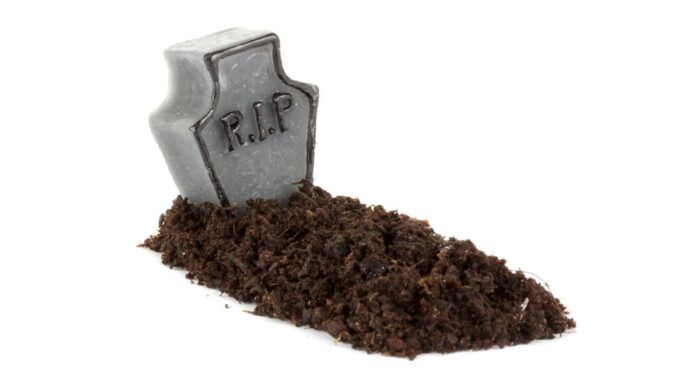The inscription on a tombstone can be as simple or detailed as you want. Some people choose to include a favorite quote or line from a song they loved.
Other people have their names, birth and death dates, and a brief epitaph on their monuments. These details can tell others about the deceased’s accomplishments and qualities.
1. Date of Death
Engraving a loved one’s headstone can be a difficult task. You want to ensure that you choose the right words to preserve their memory for decades, if not centuries, to come. The good news is that there are many different approaches to this challenge.
In the past, many gravestones included symbols such as skulls, scythes, or hourglasses to represent mortality and the fleeting nature of life. While these tombstones are still common, you can find more modern inscriptions that capture your loved one’s personality or character. For example, you may want to include a quote from a beloved book or poem on their monument. You can also choose a verse from their favorite hymn or song to add a personal touch.
Another popular option is to have a photo or sculpture of your loved one etched onto their monument. These etchings are often done using a laser or sandblasting. The result is a beautifully detailed image that can give cemetery visitors a glimpse into your loved one’s personality and life. It’s worth noting that these etchings may need to be retouched or repaired over time.
Other inscriptions on a headstone can include details about the deceased person, such as their birth and death dates or other significant milestones. They may also include a message from the family, known as an epitaph. In addition to these inscriptions, you can also choose to have additional lettering engraved on the back of a headstone. This is a great option if you’d like to include a longer selection of epitaphs or quotes than what would fit on the front of the memorial.
When choosing an inscription, it’s important to take your time and discuss the options with friends and family members before making a final decision. It’s also a good idea to speak with your local stonemason before engraving to ensure that the selected wording is both appropriate and feasible for your loved one’s headstone.
2. Name of Person
The name of the person who died is usually engraved on a headstone, along with the date of death. In some cases, an epitaph may also be included. An epitaph is a short poem, adage, dedication, or scripture snippet that characterizes the deceased person. The goal of an epitaph is to help family and friends remember the qualities that shaped a loved one.
Choosing an epitaph is a delicate and thought-provoking task, especially in a time of grief and sorrow. It is not uncommon for people to put off selecting an epitaph until after the funeral service is over. This is perfectly understandable.
A tombstone can include the person’s full name or just their first name and can contain their nickname if they had one. It is important to remember that the tombstone’s wording must be respectful and reflect the person’s personality.
Another option is to have a quote engraved on the tombstone. This can be anything from a line from their favorite book or movie to a saying they frequently said. Many people also choose to have their loved one’s picture engraved on the tombstone. This can range from a photograph to a digital portrait or even a 3D image.
The order of names on a tombstone is typically First, Middle, Last, and Maiden (if applicable). In some cases, you might want to use the person’s nickname or initials rather than their full name. For example, “Dad” or “Bob.” Likewise, it is common to see the dates of birth and death in a format such as “Yr. b. d.” or “Yr. d. b.” Lastly, some tombstones display a professional title such as “MD” or “RN.” This is particularly common in the case of medical professionals.
3. Date of Burial
The date of burial can be included on a headstone or gravestone. It can be just the year of death or a more detailed inscription, including month and day. This can be helpful to those who may want to know more about when their loved one was buried, and it can also be useful to those who are interested in attending funerals or services for their departed loved ones.
The dates on a tombstone should include the person’s birth date and their date of death. The person’s name and any other important details they would like to share should also be included on the memorial. Some people also choose to add an epitaph, a short text snippet commemorating the deceased. This can be anything from a description of their life to a favorite quote or saying.
A gravestone can be engraved with either standard lettering or v-cut. Both types of engraving can be done with sandblasting or by hand etching. Standard engraving produces a more incised look that can be left natural or painted with enamel paint or 23-carat gold leaf. Hand etching produces a deeper v-cut look that creates a more detailed design on the stone. This can be used on marble, granite, and sandstone monuments.
Some people will tell their friends, spouse, or significant other what they want to have etched on their tombstone before passing. Others may not decide until after their passing, and their family or close friends will choose the text for them. Some people also choose to have symbols, such as skulls, scythes, or hourglasses, etched on their tombstones. These are usually used to symbolize mortality and the fleeting nature of life.
4. Place of Burial
There are a few basic items that most people have on their headstones, including the person’s name, date of death, and place of burial. But there are also many ways to personalize a gravestone to make it a special tribute for your loved one. From etching photos to adding a favorite quote, the options are endless.
If you are trying to think of a good inscription for a gravestone, it is a great idea to look at what your loved one would have liked to hear themselves say. Whether it is a poem, a quote from a favorite movie or song, or even a Bible verse, these words are very meaningful and can offer inspiration when it comes to what to write on a tombstone.
A lot of people also want to include their profession on a headstone or tombstone as it is a way to remember them in their chosen field. This can also be a nice touch, especially if the person was very successful in their field. Some people even choose to have their hobbies engraved on the back of their gravestones, which can be an amazing tribute to their love of something.
A few things to keep in mind when choosing a font for a gravestone is that serif letters, which have decorative lines added to the basic form of each letter, may not look as clear or crisp on a stone. You should always talk to a professional to see what fonts are available for engraving and which ones will work best on your memorial. This will help ensure that your loved one’s message is clearly and accurately conveyed.
5. Name of Grave
A headstone is typically inscribed with a person’s name, birth and death dates, and an epitaph. A good epitaph can communicate a great deal about the deceased and can be a very poignant way of honoring them. Often, the inscription is written by friends, family, or other close people and can reflect their personality as well as offer a sense of their humor.
A tombstone inscription is something that will last forever, so it is important to make sure that it is right. A good place to start is by considering the words that best capture your loved one’s spirit. This is a difficult task, but it’s worth taking your time and working through all of the options until you find the perfect inscription.
While it’s unnecessary, some people like including a verse or a short poem on their gravestone. This can add a touch of beauty to the memorial and can also provide some comfort for those who visit. Poems and quotes can also help convey a person’s values and passions. Some examples of popular poems for a headstone are Wordsworth’s ‘To have known you was a precious gift’ and Moore’s ‘Earth hath no sorrow that heaven cannot heal’.
If you are looking for a unique approach, businesses such as Karen Sprague Stone Carvers and Roy Dixon, The Monument Artist, offer etchings that can allow for picture-based inscriptions on your loved one’s headstone. This can provide a truly unique and thoughtful way of honoring your friend or family member and can give visitors a real insight into the kind of person they were.














![Technical Aspects of 844 Area Code in 2024 [Detail Guide] 844 Area Code](https://articleify.com/wp-content/uploads/2024/01/844-Area-Code-150x150.jpg)














